Roads are a significant aspect of a city’s environment, both in terms of the area they occupy as well as their socio-environmental condition. In Mumbai for example, nearly 2000 km of roads occupy approximately 40 km2 of land. This is nearly 20% of the developable land area of 240 km2 and much more than the open spaces reservation of 24 km2. Even then there is continuous effort to expand them further. The ratio of streets area may not be much different in most cities across the world.
For various reasons, most city people spend considerable time on roads everyday. Congestion, noise and air pollution, accidents, forever increasing number of cars, shrinking space for walking and cycling, high stress levels and the loss of tree cover, are some of the common road experiences in most cities.
How do we deal with this complex web of conflicts and contradictions for the achievement of more humane and environmentally sustainable streets, and in place of highly unequal roads in favour of cars? How do we make cities and their streetscapes more livable? Reclaiming some of the street space for pedestrians and trees is part of the answer. These spaces need to be planned to be more amenable for people and nature; that is, more livable.
A significant movement presently under way in Mumbai called “Equal Streets”. I am an active member and, for the achievement of the objectives above, Equal Street is noteworthy. Excerpts from its vision statement summarize the ideas and objectives of this movement:
“Every day, people in Mumbai are being squeezed out of spaces to walk or cycle by the sheer pressure of cars, which are getting bigger than ever. Apart from the omnipresent danger posed by motorized transport on the roads, which are actually public spaces, there is the rising toll of air pollution that has left the city literally gasping for breath. Contrary to public perception, however, there is no fundamental right for motorists anywhere to drive or park: it is a privilege for a tiny minority of Mumbaikars, for which they are loath to pay”.
“Equal Streets is a public movement which seeks to correct this fundamental imbalance. As things are, the bulk of public expenditure on city transport favours owners of cars. This movement strives to put the people at the centre of usage of major roads, at least on Sunday mornings to begin with. Through this bold experiment, communities will regain control of some major roads and declare them closed to motorized traffic for a few hours every Sunday morning”.
“As the title suggests, Equal Streets in Mumbai treads the same path and resonates with the move to usher in greater democracy in accessing roads as public, rather than private, spaces. It seeks to rid select roads of an oppressive hierarchy whereby motorists believe that they have a right to occupy the major space while walkers and cyclists are pushed to the periphery, always in danger of being injured, not to mention the omnipresence of toxic emissions from vehicles. This movement is being led by local citizens, who have been highly active in preserving open spaces and waterfronts in the city”.
“Everyone, irrespective of their class or wealth, will have equal access to these open spaces on Sunday mornings. In that sense, the movement is a great leveller. It does not end at declaring certain stretches free of cars weekly but target being the catalyst for raising much greater public awareness regarding the significance of public spaces. In every corner of Mumbai, there are conventional and non-conventional spaces which deserve to be thrown open for public use. Equal Streets can indeed serve to network such spaces by creating walking and cycling tracks between them as corridors. It promotes healthy activity and seeks to correct the sedentary lifestyle which even children now find themselves engaged in”.
“Thus Equal Streets is not a one-off initiative but a sustained movement. The objective is to provide walking and cycling tracks throughout all neighbourhoods in the city. This is the assertion of a democratic principle, based on the rights of citizens to equal space in the city, and should be part and parcel of Mumbai’s Development Plan, which is now being drawn up. The first step is to generate greater public awareness and involve citizens. The closure of certain streets to motorized transport on Sunday mornings will result in achieving this larger mission”.
Besides claiming space for walking and cycling, the movement is committed to critically address a host of other concerns, if it is to achieve popularity and gain influence for the achievement of much needed socio-environmental change. Excessive obsession for private cars and their priorities, high investment for roads and flyovers, alarming loss of tree cover, the choking and hacking of trees in order to restrict their growth, reducing footpath widths in order to increase road areas while widening lane widths for cars, increasing traffic speed, rapidly increasing noise and air pollution, restricting and barricading walking spaces in order to discipline pedestrians coupled with continuing abuse, apathy and indifference by authorities towards the environment are some of the critical issues that the movement will not only protest against but also prepare designs forsustainable alternatives. “Equal Streets”, over a period of time, will hopefully be a significant socio-environmental movement in the city.
Let us turn to trees along streets with an idea of developing a rich environmental condition and thereby positively contributing to the larger objective of building healthier and more sustainable city environment. Most roads have, or are planned to have, trees along sides in order to beautify them. In Mumbai, it is alarming that 53 big trees along roads fell in just 24 hours due to rain this year alone. The city looses nearly 20 trees on an average every day. Nearly 1000 trees fell in June and July in this years rain.
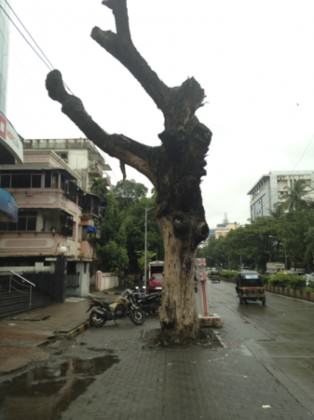
Who decides what trees have to be planted along streets? How deep can the roots go and how much should they spread. What is the basis for such decisions? Should these trees have good spread or should they be tall with minimal spread? Should the trees be decorative or deciduous? All these important questions have to be dealt with by the Equal Streets Movement and specifications for trees along streets have to be prepared, perhaps a manual produced to guide the engineers and contractors who otherwise act mindlessly.
But above all, citizens, including the Equal Streets Movement will also have to collectively intervene in decision-making and monitor and supervise the plantation and thereafter their maintenance.
In Mumbai, the manner in which trees along streets are treated by the Tree Authority and other municipal agencies like the ‘BEST’ (Public bus transport agency) is deplorable and depressing to witness. Concretization of streets and pavements are carried out up to the tree trunks, thus choking the roots from air and water. The contractors who construct roads and pavements have no knowledge about matters relating to trees, neither are they guided or controlled by any such relevant contract conditions to care about trees during their concretization onslaught. Moreover the concerned engineers of the authorities and the contractors think that leaving areas of earth around the trees would dirty pavements and roads. So they not only pour concrete tightly up to tree trunks but also damage them during excavation for footings and foundations of the streets and pavements. Then there is the construction of rain and storm water drains, which brutally destroy any roots of trees that come in the way of specified widths. Engineers of the Corporation prepare generic plans for streets, footpaths and drains sitting in their cozy offices without reflecting any concern for varying situations and existing trees along streets. The tender documents for contractors only specify the concrete quantity for which the contractor has to quote unit rates. Increasing concrete turnover is indeed their priority. Designs for the construction of footpaths and drains are standardized for all places with fixed and outdated ideas.
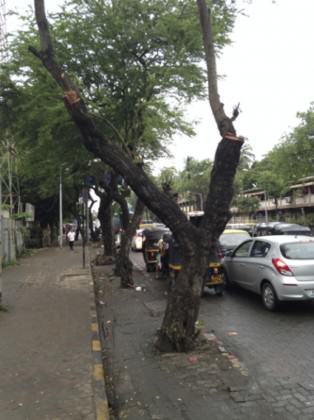
Hapless trees unfortunately do not speak nor protest then and there. They are therefore brutally attacked during our “development” projects. Gradually these trees loose strength, their anchorage to the ground is weakened; finally with time they fall or die. Mumbai is experiencing rapid loss of tree cover along
Streets decay because of this continuing abuse and indifference by authorities accompanied by the lack of citizen’s awareness. While we regularly lose trees, there are no new trees being planted, due to lack of tree planting plans for streets by the Municipal Corporation.
Trees along streets have many benefits. The list can be rather long but I shall highlight a few here. Trees absorb carbon monoxide that cars emit in large quantities. They provide shade and make the area cooler and comfortable for people to walk. Leaves and roots of trees absorb a fairly good quantity of rain-water, thus reducing load on storm water drains that takes huge amounts of money to construct. Driving on streets having tree cover is much less stressful than driving on streets without trees. Street trees provide comfort to pedestrians too. Besides providing shade, they reduce ambient temperatures considerably in hot weather.
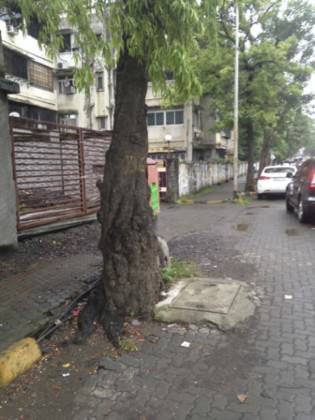
There have been many studies to establish all these facts. Trees along streets also contribute substantially to the beauty and aesthetics of the street as well as the city. Street trees provide relief to buildings along streets from noise, dust and fumes from car exhausts. Jeff Spek, in his book ‘ Walkable City’ has enumerated with ample references to various research data on the above issues and has also analysed in depth the plight of pedestrians and cyclists in cities.
Can the ‘Equal Streets Movement’ address these issues in Mumbai, promote public knowledge and influence the authorities to prepare plans and undertake their implementation with citizens’ participation? We will have to wait and watch.
Lack of citizens’ awareness is a serious matter of concern for the movement. Getting to the streets to walk and cycle and enjoy few hours of planned and spontaneous cultural and entertainment programs as planned on Sunday car-free days will undoubtedly be successful. In a similar activity called ‘Rahagiri’ organized by local organizations and the ‘Times of India’ on Sundays in Gurgaoan in Delhi, more than 20,000 people participate, mostly from middle and upper classes.
But, it is another thing altogether when it comes to expressing concerns about trees and other critical environmental issues including cutting down of roads and cars. There are many serious class and related cultural issues that have to be analyzed while organizing such movements. It shocks me as to how and why most city folks, rich and poor equally, instinctively attack trees. They hack their branches with slightest excuse, because the falling leaves dirty their properties. They fear that falling branches and entire trees during wind and rains may pose danger to people and property and parked cars. This fear has got compounded due to a few such incidences and their prominent coverage by the press.
But they do not think to the reason why the trees are falling. Why is such a reactionary instinct against trees noticed amongst city folks? I am sure that many of these people, when they were living in their villages, were nature-caring, worshipping trees and plants and water. Historically it is a fact that communities always had deep-rooted relationships with nature and the environment. Is this change in behavior in cities rooted in the culture of violence that is increasingly becoming a way of urban life, that is severing individual and community relations along with growing apathy and alienation towards the environment? Or is it that these people let their anger and frustration out on trees and nature due to increasing misery and stress of city life? We notice levels of intolerance; apathy, anger, revenge, individualism, etc., rising and fast becoming the mark of city culture.
The case of regular attacks on mangroves and wetlands in Mumbai is no different. Land sharks, real estate agents and developers regularly carry out destruction of the mangroves. Mumbai incidentally has enormous mangrove cover (ca. 61.42 km2) intermingling with the city’s landmass. Similarly, forests too are attacked and encroached. Such aggression towards nature and various environmental features is a long story. As a matter of fact, landfilling wetlands, riverbeds and seacoasts are a historical phenomenon in the making of Mumbai from seven islands to a metro today of 480 km2 and twelve million people. (Of the 480 km2 nearly 240 km2 is developable land while the balance 240 km2 is the vast extent of natural features—rivers, creeks, mangroves, wetlands, watercourses, hills, forests, etc.)
Let us get back to the streets. Space for walking is diminishing by the day due to road widening. Also trees that exist for years along roads and footpaths are now perceived as obstruction in the way of road widening and done away with. There has to be a massive campaign and a strong movement for protection and conservation of trees along the streets in Mumbai, as much in all cities globally. The ‘Equal Streets Movement’ is a significant beginning that addresses the various issues into a comprehensive and sustainable development model with environmental thrust.
In the neighborhood planning for Juhu (an area of approximately four km2 in Mumbai), citizens of the area, along with this author, have prepared their own vision plan in which walking and cycling has been proposed as an important mobility mode within neighborhoods. This perspective has led to the idea of networking and inter-connecting the various public spaces including, open spaces and the diverse extent of natural assets in the area.
Cities cannot be planned to merely have large landscapes or gardens and parks. Jane Jacobs in her various writings has discussed this issue in depth. Big parks or open spaces do not necessarily improve the quality of life and daily experiences of most people living in cities. What matters most is a series of small initiatives intertwined with their neighborhoods and well connected with other such spaces in adjoining areas for easy accessibility and engagement. These ideas would have to be consciously included into urban planning and design proposals. Streets are one such element that connects one area with the other, while enabling social networks and an opportunity for improving the environment.
P.K. Das
Mumbai


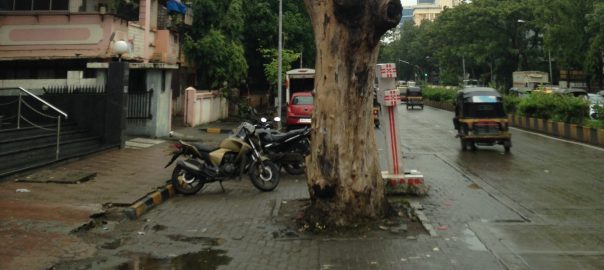
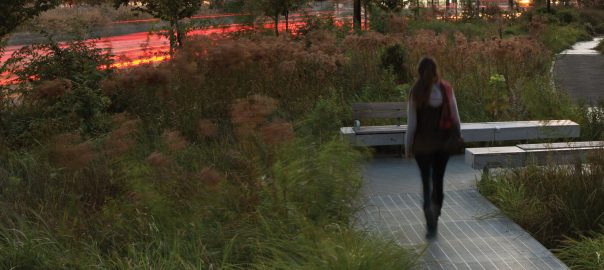
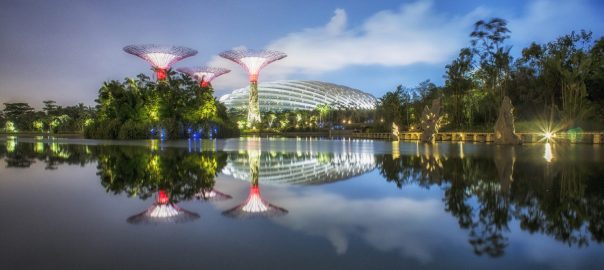
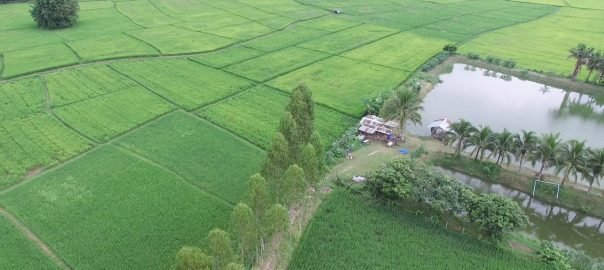
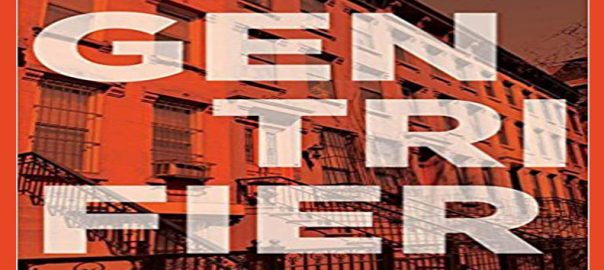
Leave a Reply